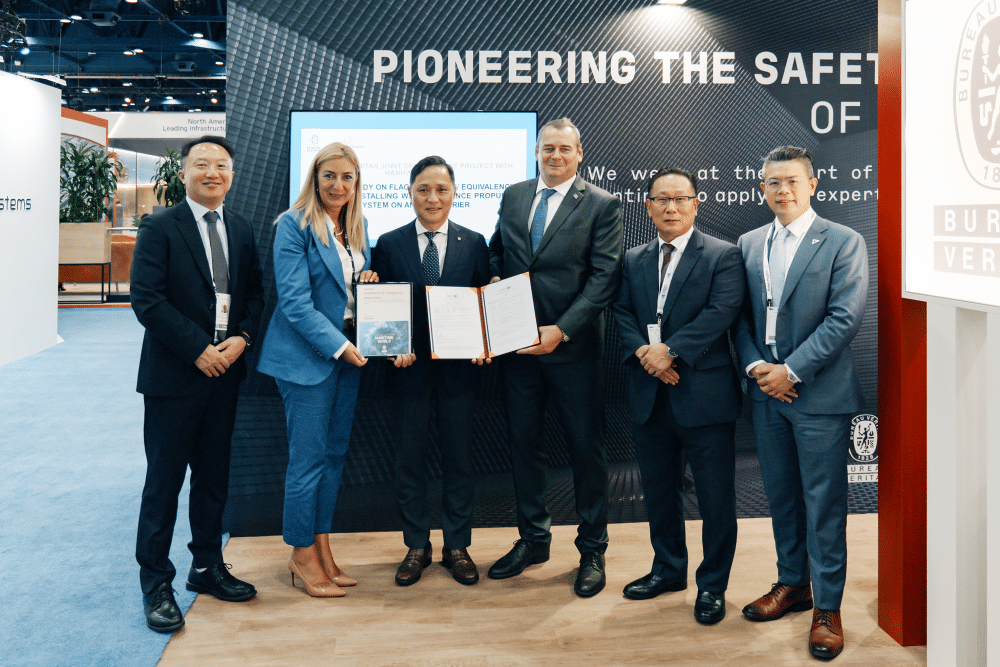Hanwha Ocean’s Rotor Sail system design receives approval from Bureau Veritas
Hanwha Ocean Gets Important Approval for New Wind-Powered Rotor Sail System at Gastech 2024

At Gastech 2024, Hanwha Ocean, one of the world’s largest shipbuilders, announced an important achievement in its wind-powered technology. The company has earned approvals from both Bureau Veritas Marine & Offshore (BV) and the Liberian Registry for its new rotor sail system on LNG (Liquefied Natural Gas) carriers. This approval marks a big step forward in using wind power to help ships move, which will reduce the harmful gases ships release into the air.
The approval process was part of a special project where Hanwha Ocean worked with BV and the Liberian Registry. They focused on making sure the rotor sail system could meet important safety and international rules, like the International Convention for the Safety of Life at Sea (SOLAS) and International Convention for the Prevention of Collisions at Sea (COLREG). These rules are important to keep ships safe while on the water.
How the Rotor Sail Works
The rotor sail system works by using wind energy to push the ship forward, reducing the need for engine power. This helps lower fuel use and cuts down the harmful greenhouse gases that come from ships. The rotor sails sit on the deck of the ship and spin when the wind blows, creating extra thrust. This system is part of a growing trend in the shipping industry to find cleaner ways to move cargo across the sea, as stricter environmental rules are being put in place globally.
However, fitting these large rotor sails on a ship presented some challenges. One of the biggest problems was making sure that the sails didn’t block the crew’s visibility, which is a key rule in international shipping safety laws. To handle this, Hanwha Ocean, BV, and the Liberian Registry worked together to study the best ways to design and arrange the sails on the ship. This included a special risk assessment called a Hazard Identification (HAZID) study to look at and fix any possible dangers the sails might create.
ABS Approves Innovative Emissions Reduction Technology for Ammonia-Fueled Ships
Meeting High Standards
To get the rotor sail system approved, Hanwha Ocean had to prove that their design met very strict standards set by BV. The system was measured against BV’s rules for Wind Propulsion Systems and for the Classification of Steel Ships. After reviewing all the designs and safety measures, BV awarded Hanwha Ocean a Statement of Compliance, while the Liberian Registry granted an Approval in Principle. These approvals show that the rotor sail system is safe and ready to be used on commercial ships.
Conclusion
The rotor sail system designed by Hanwha Ocean is a major step forward in the shipping industry’s move toward greener and more eco-friendly technologies. By using wind to power ships, this system not only helps reduce fuel costs but also cuts down harmful emissions. This achievement, recognized at Gastech 2024, shows that wind-assisted propulsion technology has a promising future in helping the shipping industry meet global environmental goals.
